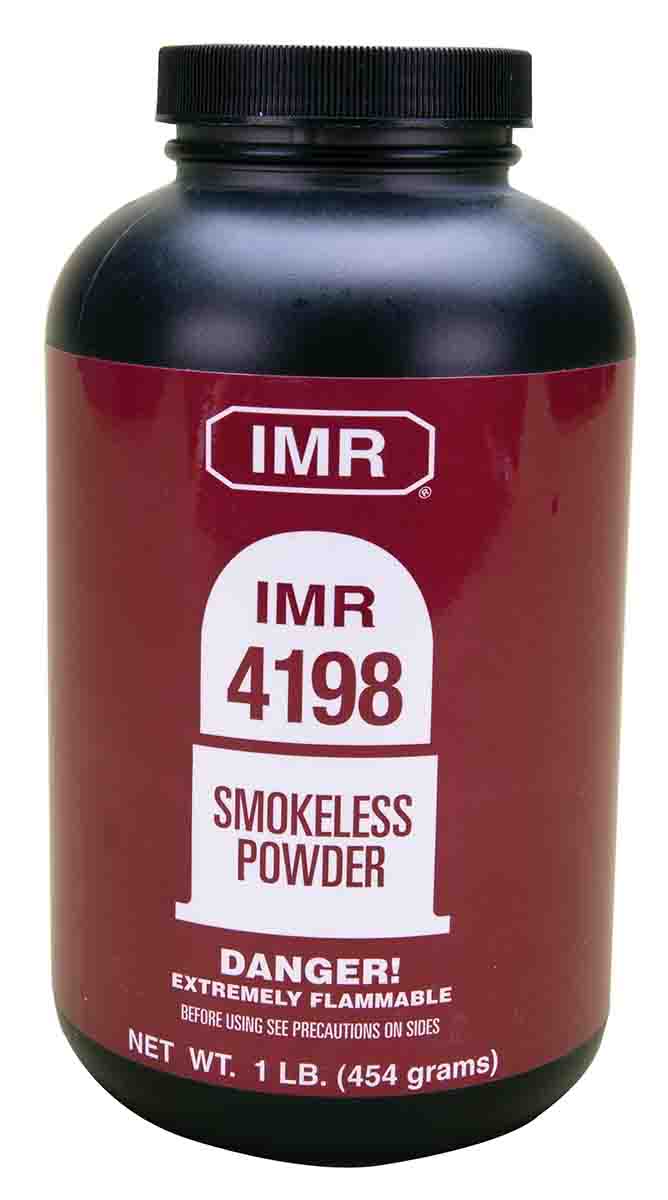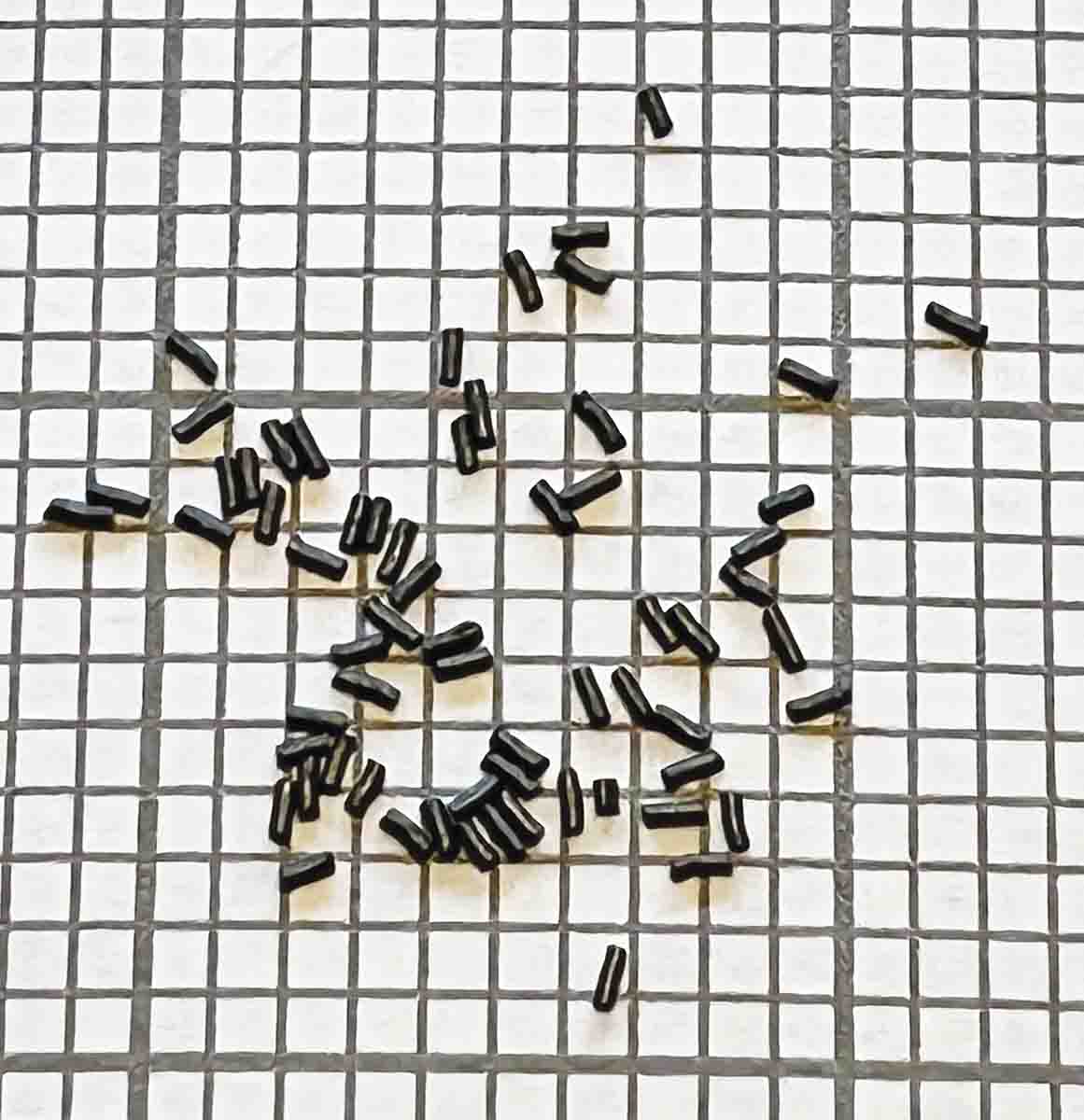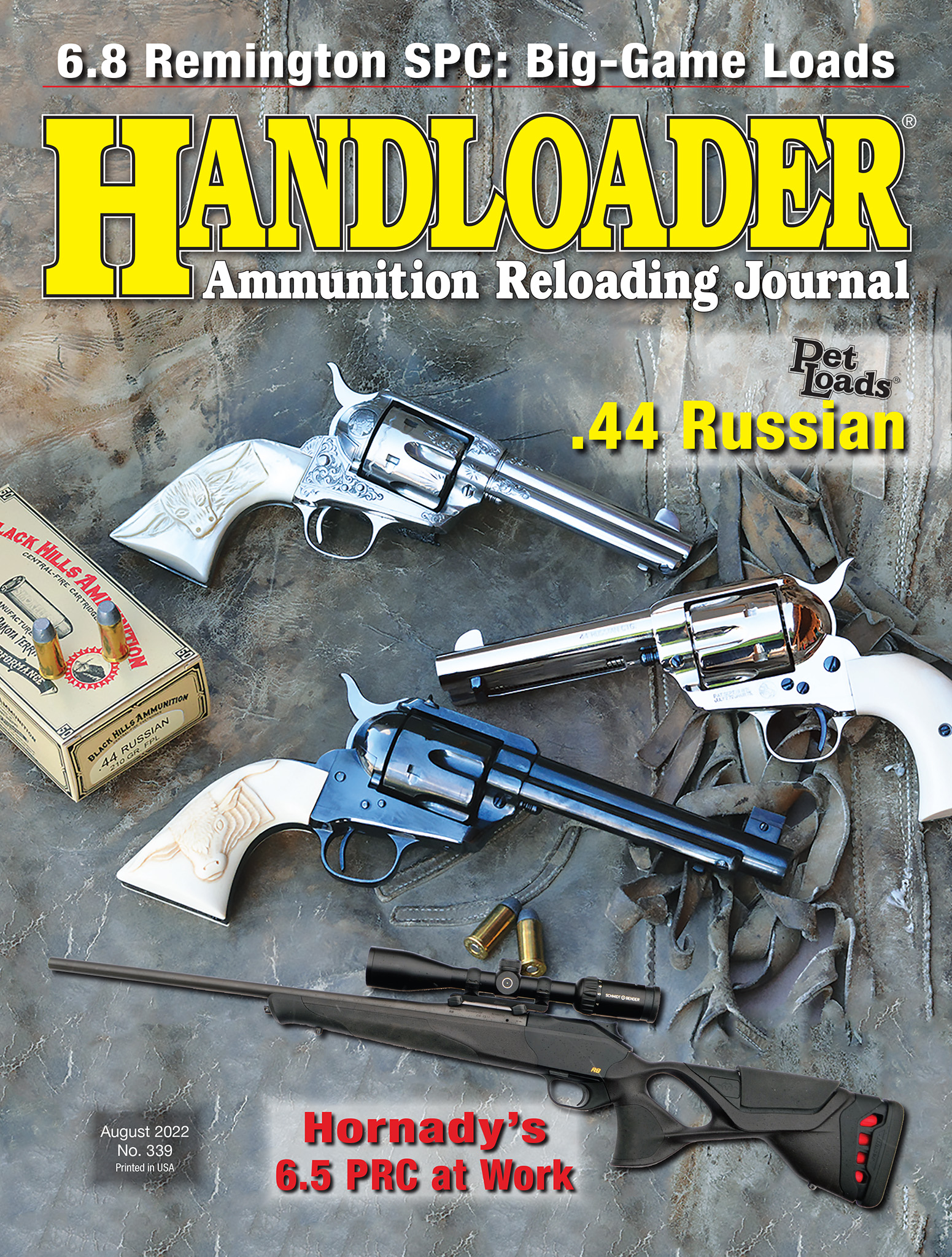Propellant Profiles
IMR-4198
column By: R.H. VanDenberg, Jr. | August, 22

As I mentioned in a prior column recently, components are still in tight supply. Reloaders may find the stores they frequent have inventory of nearly every caliber of bullet, but the selection by brand and specific series of bullets will have a lot of unfilled holes. Powders and primers continued to be a “take what you can get” scenario.
Three months prior to my editor’s deadline for this column, I had placed orders for three newer propellant powders that I have yet to feature in the “Propellant Profiles” column. I can tell you that in these times, it is just as hard for writers, such as myself, to get powder as it is for anyone else. Our departure date for this trip happened to coincide with the due date for submission of this column. The day arrived and none of the powders I ordered had arrived. Now just to make it abundantly clear, I am not pointing a stick at any of the powder manufacturers or distributors here. From my industry background, I know the inner workings of the powder mills, importation and distribution channels better than most, and I can tell you that these folks are working their tails off trying to make and distribute as much powder as the current market is clamoring for. I can also tell you there is no simple, quick “fix” like, “Oh, why don’t they just build a new powder mill or add more production capacity to an existing plant?” Readers may recall that at least three times in our country’s history, the Civil War, World War I, and World War II, the industry stepped up to the plate and did that. In each instance, when things returned to the “new normal” there was a huge surplus of manufacturing capability, and some of our major manufacturers like Colt, Remington and Winchester, were one time or another left on the brink of bankruptcy because of incurred expansion expenses and the “new normal” market demand did not generate enough cash flow to pay the debt down.
Well, so much for these interesting times. My editor was expecting copy for this column and I would have to punt or be the subject of a butt-whipping.

IMR-4198 has been the focus of “Propellant Profiles” columns in the past, but like I said in my opening comments of this column, in the interesting times we live in and with the supply chain issues one has to work with what one has. But more importantly, during these times of propellant powder shortages, versatility can be a huge plus and IMR-4198 is an extremely versatile powder so let’s take a look.
I am going to pass on repeating the physical characteristics of IMR-4198 here, as it has been thoroughly covered in previous “Propellant Profiles” columns. I will suggest if you do not have a back issue of Handloader or a copy of the Propellant Profiles book, purchase a subscription to the online Handloader content and a reader will be able to find it there.
IMR-4198 is a fast burning, single-base powder. In the latest LoadData.com burn rate table, IMR-4198 is listed as No. 99, sandwiched between Alliant Reloder 7 (98) and Hodgdon H-322 (102). Versatility is 4198’s strong suit and Hodgdon lists more than 25 cartridges with loading data using IMR-4198. It provides outstanding performance in cartridges like my favorite .221 Fireball, the .222 and .223 Remingtons, and other small-bore varmint-class cartridges; 7.62x39mm, .444 Marlin, .450 Marlin and .45-70 with jacketed and cast bullets; and a host of cartridges with cast bullets such as the .270 Winchester, .308 Winchester and .30-06 Springfield.
Over the years, IMR-4198 has had a strong following among the benchrest crowd, and while there are newer, more advanced propellants, IMR-4198 is still a strong contender in many small-bore benchrest/varmint-class cartridges.
Loading for my .221 Fireball during this trip, in the ranch bunkhouse, all the IMR-4198 powder charges were dropped directly from my Neil Jones Custom powder measure into the cartridge cases. Some months ago, when I penned the feature article on the .221 Fireball for the Spring 2021 Rifles Varmint Rifles and Cartridges edition, I had calibrated my Neil Jones Custom powder measure “clicks” to the lot of IMR-4198 I have on hand. I have absolute confidence in the Jones Custom powder measure but just for heck of it, I absconded with my Canadian buddy, John Gray’s, Redding Model 2 scale to take down to the ranch to see if everything was in sync. The sample charges I threw from the Jones measure were spot-on the 17 grains I had set the measure to throw.
I came to really appreciate the Redding Model 2 scale as a great scale for inclusion in a portable handloading kit. It is very accurate and consistent, the magnetically dampened beam settles down quickly and smoothly, and the beam bearings are precision-machined stainless-steel inserts rather than the floating agate bearings many other scales use. Not to say that the Redding bearings are any better than the floating agate bearings, but for a portable handloading kit, I think they are more robust and less susceptible to damage from the inherent vibration a scale is subject to when in a kit that travels thousands of miles a year.
For those readers not familiar with the gopher, it is about a half-size, height and width, version of a prairie dog. Technically referred to as “pocket gophers,” gophers, like the prairie dog, are known for their extensive tunneling activities and their ability to destroy hundreds of acres of farm and ranch land.
I ended up following the “keep it simple” axiom on this trip and stuck with one load for the .221 Fireball, the CCI 400 Small Rifle primer initiating 17 grains of IMR-4198 pushing the Hornady .22-caliber 50-grain V-MAX bullet at an average velocity of 2,895 feet per second. This Hornady bullet works excellently at this velocity. The two half-days we shot gophers were windy, 15 mph range, and cold but sunny. Most of our shots were in the 120- to 150-yard range.
From small-bore varmint rifle cartridges to pushing both cast and jacketed bullets in the .45-70 Government, IMR-4198 is a versatile powder that many handloaders will benefit from having on hand. IMR-4198 is one of the Hodgdon powder brands and it is available in 1- and 8-pound containers.



.jpg)